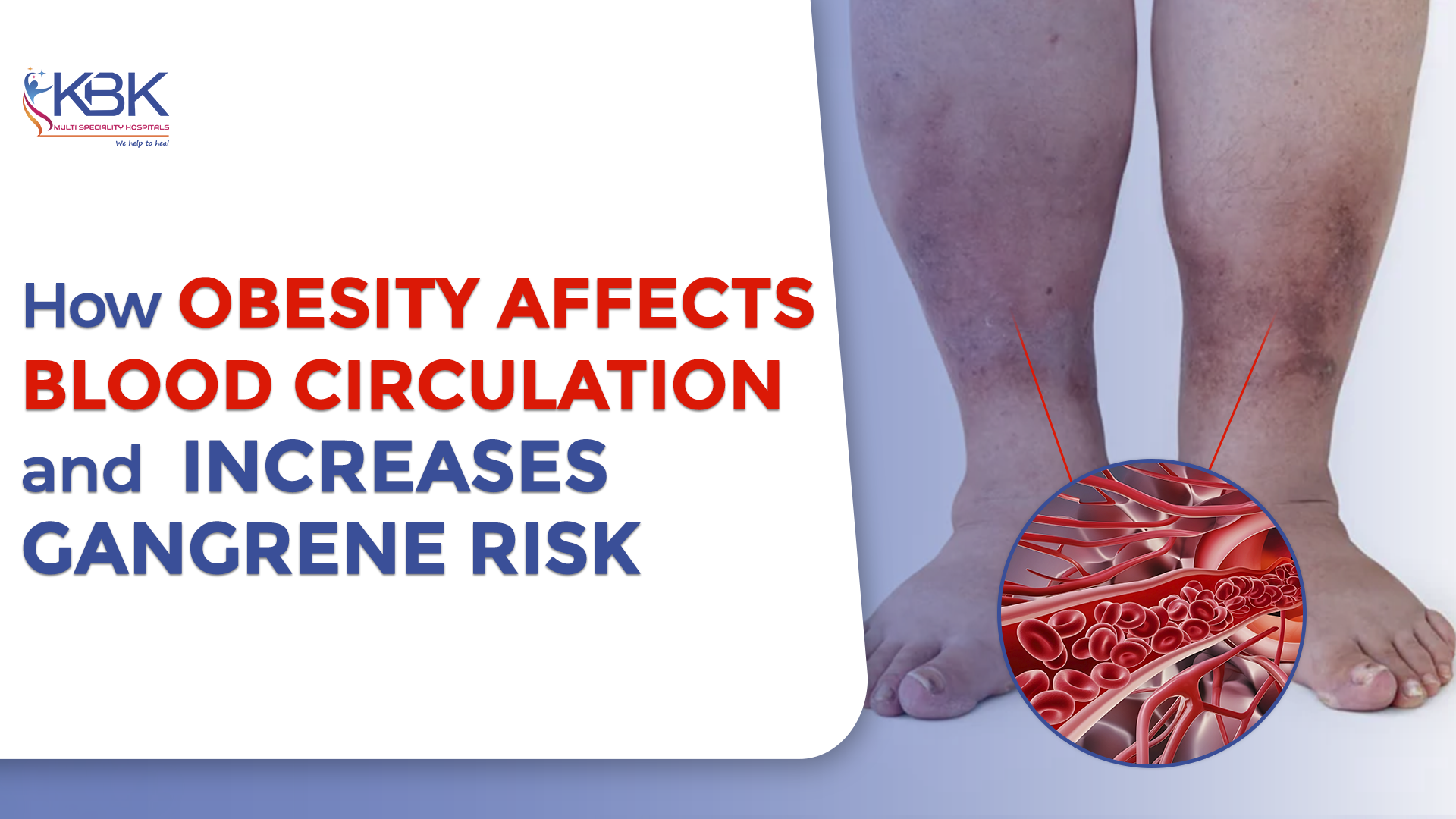Keeping a healthy weight is important for the body to work well. Extra body fat can slow down blood flow and cause serious health issues. Obesity risk plays a big role in poor circulation, which can lead to dangerous conditions like gangrene. Knowing how obesity affects blood circulation helps in taking the right steps to stay healthy and safe.
How Obesity Affects Blood Circulation
When a person gains excess weight, the heart needs to pump harder to move blood through the body. The buildup of fat in and around the arteries makes them narrow and less flexible. This condition, called atherosclerosis, reduces the amount of oxygen and nutrients that reach the muscles and tissues.
As circulation slows down, people may feel coldness, tingling, or swelling in their feet and legs. Wounds may take a long time to heal, increasing the chance of infection. Obesity risk also increases inflammation in the body, which further damages blood vessels. Over time, these problems make it harder for blood to flow smoothly, especially to the lower parts of the body.
Connection Between Obesity and Gangrene
When blood flow is weak, tissues do not get enough oxygen to stay alive. If the blood supply stays blocked for a long time, the tissue begins to die. This process leads to gangrene, which often starts in the toes, feet, or legs.
People who are overweight often face other health problems like diabetes, high cholesterol, or peripheral artery disease (PAD). These issues make blood circulation worse and slow down healing. Even a small cut or blister on the foot can turn into an infection. Without enough blood supply, the infection spreads, and the tissue starts to decay, leading to gangrene.
Early warning signs of gangrene include:
- Change in skin color (pale, bluish, or black)
- Numbness or loss of feeling
- Foul smell from the affected area
- Pain or unusual coldness in the skin
Quick medical help can prevent these symptoms from getting worse.
Ways to Reduce Obesity Risk and Improve Circulation
Lowering obesity risk helps improve blood flow and reduces the chance of gangrene. Here are some useful steps to follow:
- Be active every day: Simple exercises like walking, cycling, or stretching help move blood better.
- Eat healthy foods: Choose fruits, vegetables, whole grains, and lean proteins instead of fried or sugary foods.
- Keep your weight under control: Losing even a small amount of weight improves circulation and energy levels.
- Avoid smoking and alcohol: These habits make blood vessels narrow and slow down oxygen flow.
- Manage health conditions: Keep blood sugar, cholesterol, and blood pressure at normal levels.
- Check your feet often: Look for cuts, sores, or color changes and keep them clean and dry.
Conclusion
Obesity risk affects the heart, blood vessels, and overall health. Poor blood flow caused by excess weight can lead to infections and, in severe cases, gangrene. Taking simple steps like eating better, staying active, and maintaining a healthy weight can protect your circulation and prevent problems. Paying attention to body changes and seeking early care keeps the limbs strong and healthy for years to come.obesity risk



